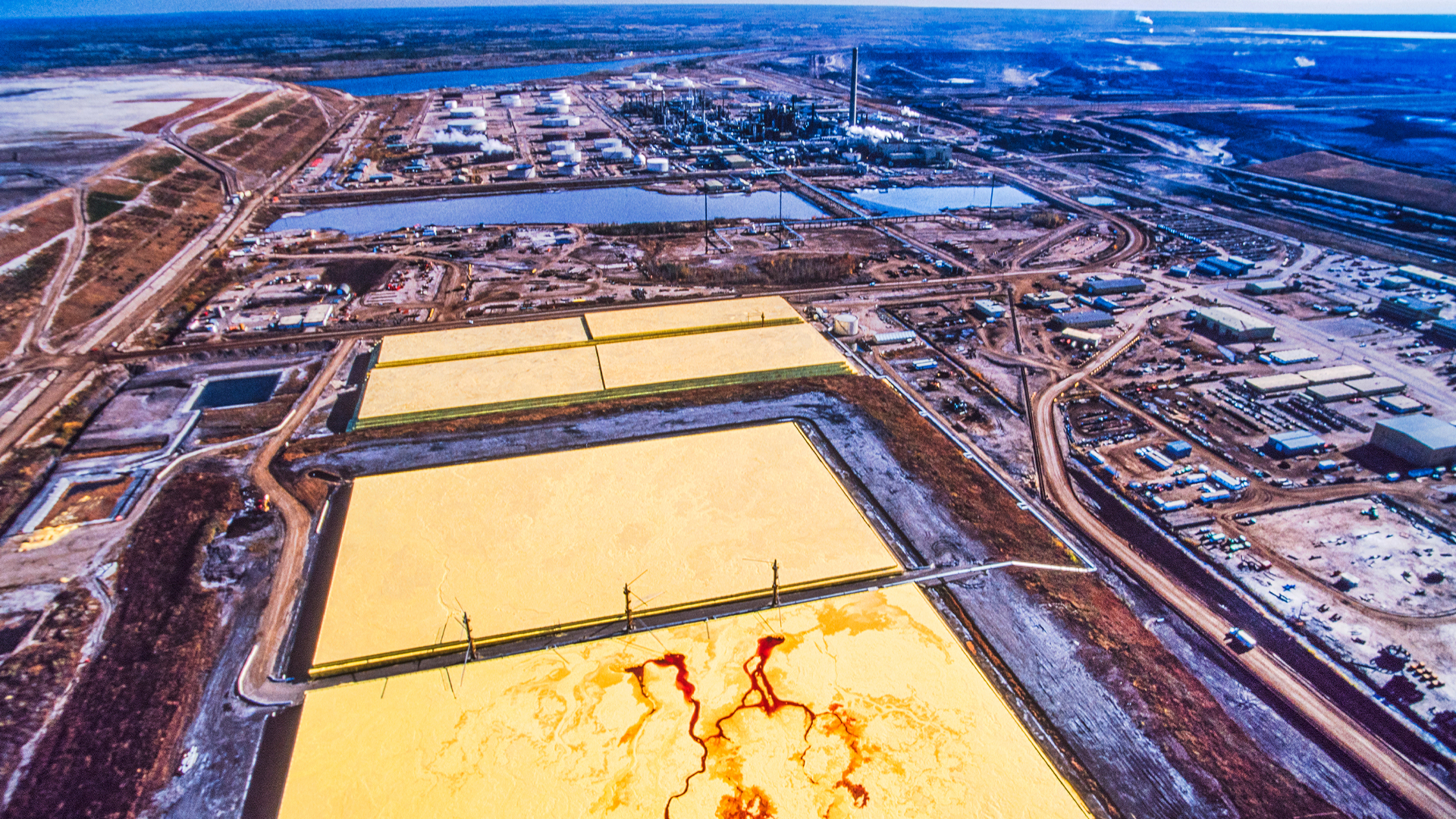
The December 2015 climate change summit (COP 21) in Paris achieved an ambitious and unprecedented framework agreement to limit human-caused global warming. Canada played an active role, and the new Liberal government has committed to setting national greenhouse gas (GHG) emissions targets with the provinces and territories, together with an action plan to achieve them. Alberta’s recently announced economy-wide carbon tax and targeted GHG reductions for all major provincial GHG emitters, British Columbia’s highly successful carbon tax, and cap-and-trade initiatives by Quebec, Ontario and Manitoba bode well for further actions to mitigate global warming.
The future development of the Alberta oil sands must be a critical part of these commitments, and proposals for transmission of oil sands crude by pipeline cannot be divorced from the larger question of the rate of oil sands development. The major pipeline projects currently being proposed would support substantially expanded oil sands production as well as increased energy consumption and GHG emissions, thus potentially compromising the achievement of Canada’s mitigation targets.
Despite these concerns, there is little question that the oil sands will continue to play a significant part in global fossil fuel production. The International Energy Agency reports that the share of fossil fuels in global primary energy demand would be reduced only slightly — from 82 percent in 2011 to 64 percent in 2035 — if countries adopt the policies needed to stay below 2°C of warming. Thus, fossil fuels will remain a significant energy source for decades to come, even if ambitious GHG reduction targets are met by the international community and there is a substantial increase in renewable energy use.
It is precisely because the transition from fossil fuels to renewable forms of energy will take considerable time that it is essential that petroleum products derived from the oil sands are produced and delivered to markets in an environmentally responsible way. A viable, responsible oil sands industry can make much-needed contributions to Canada’s economy, including public revenue for investments in health, education and renewable energy.
To achieve this, we recommend three initiatives that can reduce GHG emissions, better protect our environment and ensure a positive impact on the Canadian economy.
First, we must reduce GHG emissions from bitumen production. Canada needs to support the oil sands industry’s efforts to reduce these emissions, either by improving extractive and processing efficiency or through accelerated use of carbon capture and storage (CCS) as this technology is proven feasible.
The Pembina Institute reports that steady increases in overall bitumen production levels have been outstripping any per-barrel reductions in GHG emissions and that overall GHG emissions from the oil sands remain the fastest-growing source of climate change pollution in Canada. Realizing this, Canada’s oil sands industry has already made a start on reducing GHG emissions. Environment Canada reports that between 1990 and 2013, GHG emissions associated with each barrel of oil sands crude produced have been reduced by 30 percent, and the Canadian Association of Petroleum Producers reports real progress in developing a variety of new technologies to lower GHG emissions. Canada’s Oil Sands Innovation Alliance is a recent initiative through which oil sands companies are beginning to collaborate with universities, governments and research institutes to develop innovative technologies to reduce energy use and associated GHG emissions from both open-pit mining and in-situ operations.
We believe it is essential that time, space and financial investments are made by government and industry alike for such innovations to be further developed and brought into common practice. The Alberta government’s carbon pricing policies and a cap on future oil sands emissions are important starting points. Support for additional research on both increased efficiency and CCS options is needed to ensure that the oil sands industry is able to meet the challenges of a carbon-constrained world.
Second, Canada must increase its bitumen upgrader capacity. We clearly need to produce a safer and cleaner product than oil sands bitumen. Transporting unconventional heavy oils, including dilbit (bitumen diluted with condensate or synthetic crude), by pipeline poses risks to terrestrial, aquatic and especially marine environments if spills occur. Dilbit is especially threatening since the diluents can vaporize and the viscous bitumen sinks in water, making spill cleanup difficult and expensive. Upgrading and/or refining oil sands products prior to pipeline transmission not only is more environmentally responsible but will add value to the product, create more jobs and related economic multiplier effects and potentially lead to a more viable petrochemical industry in Canada. Furthermore, upgraded or refined oil sands products in excess of Canadian requirements can obtain higher prices than bitumen in both North American and overseas markets. The Alberta government’s decision to consider increasing provincial refining capacity is important and should receive support and collaboration from industry and the federal government. Indeed, such an approach would be a strong fit with major infrastructure investments promised by the Liberal government in Ottawa.
The current practice of shipping heavy crude oil in pipelines needs to be curtailed, requiring the development of more refining capacity in Canada to process bitumen directly. There are no refineries east of Ontario that can handle large amounts of bitumen, and only a few refineries in Alberta and one in Ontario that have this capability, albeit for just a small fraction of total bitumen production. There is also no firm evidence that refineries in Quebec and New Brunswick are ready to invest in the substantial technical upgrades required to handle dilbit, although there are indications that Suncor may do so at its Montreal refinery. The alternative of adding to Alberta’s upgrading and refining capacity (that is, its capacity to produce synthetic crude and lighter petroleum products such as gasoline and diesel) should be favoured, since the optimal solution is to entirely eliminate the transport of heavy crude oil, especially oil sands dilbit, in pipelines.
The third initiative we recommend is to construct the Energy East pipeline. We believe that President Obama did Canada a favour in rejecting the Keystone XL pipeline proposal because it would simply have shifted the environmental impact accountabilities onto the Americans, together with all the value-added benefits of refining bitumen on the Texas coast. We don’t consider Keystone XL to be either environmentally responsible or in Canada’s economic interest.
The Trans Mountain Expansion and Northern Gateway pipelines are proposed to deliver heavy crude (in dilbit form) from the Alberta oil sands to the BC coast in order to ship it as feedstock to overseas refineries in Asia. These proposals threaten the rich marine ecosystems of the Pacific coast and they would effectively send overseas all of the potential benefits of upgrading and refining oil sands bitumen in Canada.
By contrast, the Energy East pipeline would cross the prairie provinces, Ontario, Quebec and New Brunswick. Because it would convert an existing natural gas pipeline from Alberta to the Ontario-Quebec border, it would require minimal new right-of-way for this section. New pipeline would be built through Quebec and New Brunswick, with most of the route situated within already established transportation corridors.
Energy East is presently designed to deliver Alberta crude oil as feedstock to three refineries in Quebec and New Brunswick, as well as to overseas markets through a deepwater port at Saint John. Many experts believe that the majority of the crude would be shipped overseas, thus further reducing benefits to Canada. If it were designed to carry upgraded crude or syncrude instead, the Energy East pipeline would have a dual benefit: value would be added by increasing overseas exports of refined petroleum products, while the foreign heavy crude oil currently being imported from overseas and the Bakken shale oil from the US would be reduced.
Energy East would cross less rugged terrain than either of the proposed western pipelines, with less environmental risk. While the Energy East pipeline would still carry the risk of potentially adverse impacts on the environment, archaeological sites and cultural places of First Nations, it is possible to avoid or mitigate these impacts through comprehensive environmental assessment, effective regulations and enhanced pipeline design and monitoring procedures (such as extra-heavy wall pipe at water crossings, regular inline inspections with “smart pigs” (devices that record information inside the pipeline), automatic shut-off valves at water crossings, real-time monitoring of line pressures from a central location and regular visual inspections, possibly using specialized drones).
Dilbit is a significant proportion of the liquid petroleum products presently proposed to be transmitted in the Energy East pipeline to Saint John, where it would be loaded and shipped in tankers to overseas markets. If the Energy East pipeline is constructed in conjunction with bitumen upgraders in both Alberta and eastern Canada, the proportion of dilbit shipped by the pipeline and on the high seas can be steadily reduced with time. It is critical, however, that the pipeline be approved and constructed as soon as possible, because its availability would provide the oil industry with another incentive to increase upgrader capacities in Canada.
While the environmental risks associated with the Energy East pipeline can be minimized, they cannot be completely eliminated. Nevertheless, it is a much safer option than either the two western pipelines or rail transportation of crude oil. The increase in rail transportation of crude oil has been a perverse outcome of pipeline construction delays, due to lengthy and expensive hearing and approval processes. It is now time to reverse this trend and move forward with environmentally acceptable pipeline developments.
Important issues need to be resolved with First Nations communities. The Energy East pipeline would cross the traditional territories and reserve lands of several First Nations, posing potential risks to cultural practices, sacred places and community resource use areas. In the wake of Supreme Court of Canada rulings on land claims, treaty and indigenous rights and the recently released recommendations of the Truth and Reconciliation Commission, there is a pressing need to work respectfully in partnerships with First Nations to avoid the consequences of an externally imposed pipeline project. Therefore, the environmental assessment process for Energy East must apply the best scientific data for environmental values, as well as the traditional ecological knowledge held by First Nations. Environmental management and governance should be fully negotiated and co-developed with First Nations over the entire operational life of the pipeline, not just during the regulatory approval stage.
We believe that Canada’s oil sands can be a strong asset in the country’s efforts to reduce greenhouse gas emissions while maintaining a strong and versatile economy. To reach these goals, we must develop a more efficient and less emissions-intensive oil sands sector, linked to the development of additional bitumen upgraders in Alberta and eastern Canada and carrying crude and eventually finished products via the Energy East pipeline, which would itself be designed and constructed in an environmentally responsible manner. These three linked initiatives will provide more employment, manufacturing and refinery spinoff benefits than current plans that have focused solely on the export of raw bitumen to overseas markets.
We are convinced that these initiatives can make a concrete contribution to Canada’s climate change action plan and will have positive effects on the Canadian economy as our country transitions to a low-carbon future.
This article is part of the After Paris: Next Steps on Climate Change special feature.










